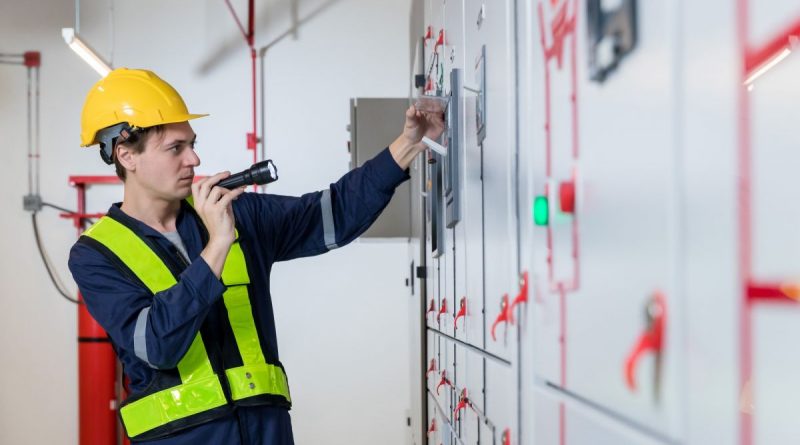Electrical Safety Training: Safeguarding Lives and Workplaces
Introduction
Electrical safety is a critical aspect of workplace safety, especially in industries where employees are exposed to electrical hazards regularly. Accidents related to electricity can lead to severe injuries, fatalities, and property damage if proper precautions are not taken. Hence, implementing comprehensive electrical safety training programs is paramount to ensuring the well-being of workers and the smooth operation of businesses.
Importance of Electrical Safety
The importance of electrical safety cannot be overstated. Electricity is a powerful and essential resource, but it can also be extremely dangerous if mishandled. Without proper training and awareness, workers may unknowingly put themselves at risk while performing tasks involving electricity. Electrical safety training equips individuals with the knowledge and skills necessary to identify and mitigate potential hazards, reducing the likelihood of accidents.
Risks Associated with Electrical Work
Working with electricity poses various risks, including electric shock, burns, arc flashes, and fires. These hazards can occur due to faulty equipment, improper wiring, or negligence. Electrical accidents can have devastating consequences, affecting not only the individuals involved but also their families and colleagues. By prioritizing electrical safety training, organizations can create safer work environments and prevent tragic incidents.
Understanding Electrical Hazards
Before delving into electrical safety training, it’s crucial to understand the different types of electrical hazards and their causes. Electrical hazards can be categorized into several types, including electric shock, arc flash, and arc blast. These hazards often arise from factors such as exposed wires, overloaded circuits, and faulty equipment.
Common Causes of Electrical Accidents
Electrical accidents can occur due to various reasons, such as inadequate training, lack of awareness, and equipment malfunction. Failure to follow proper procedures, ignoring safety protocols, and working in hazardous conditions can also increase the likelihood of accidents. Understanding the common causes of electrical accidents is essential for developing effective safety training programs.
Components of Electrical Safety Training
Effective electrical safety training programs typically consist of a combination of classroom instruction and hands-on training. Classroom sessions cover theoretical concepts, safety procedures, and regulatory requirements, while hands-on training allows participants to apply their knowledge in practical scenarios.
Classroom Instruction
In the classroom setting, participants learn about electrical theory, hazard recognition, and safety best practices. They also familiarize themselves with relevant regulations, such as those set forth by the Occupational Safety and Health Administration (OSHA) and the National Fire Protection Association (NFPA).
Hands-on Training
Hands-on training provides participants with practical experience in working safely with electricity. This may include activities such as using personal protective equipment (PPE), performing risk assessments, and practicing emergency response procedures. Hands-on training allows participants to develop skills that are essential for real-world situations.
Safety Procedures and Protocols
In addition to theoretical knowledge and practical skills, electrical safety training emphasizes the importance of following safety procedures and protocols. This includes conducting pre-work inspections, implementing lockout/tagout procedures, and adhering to established safety guidelines at all times.
Legal Requirements and Standards
Compliance with legal requirements and industry standards is a fundamental aspect of electrical safety training. Organizations must ensure that their training programs align with regulations established by regulatory agencies such as OSHA and industry standards like those outlined by the NFPA.
OSHA Regulations
OSHA sets forth regulations and standards aimed at protecting workers from electrical hazards in the workplace. These regulations cover various aspects of electrical safety, including equipment maintenance, safe work practices, and training requirements. Organizations must comply with OSHA standards to maintain a safe and healthy work environment.
NFPA Guidelines
The NFPA publishes standards and guidelines related to electrical safety, including the NFPA 70E Standard for Electrical Safety in the Workplace. This standard provides requirements for electrical safety training, PPE selection, and hazard mitigation strategies. Adhering to NFPA guidelines helps organizations enhance their electrical safety practices and prevent accidents.
Personal Protective Equipment (PPE)
Personal protective equipment plays a crucial role in mitigating the risks associated with electrical work. Proper selection, usage, and maintenance of PPE are essential elements of electrical safety training.
Types of PPE
Common types of PPE used in electrical work include insulated gloves, safety glasses, arc-rated clothing, and hearing protection. The specific PPE required depends on the nature of the work being performed and the associated hazards.
Proper Usage and Maintenance
Employees must receive training on the proper usage and maintenance of PPE to ensure its effectiveness. This includes instructions on how to inspect PPE for damage, wear it correctly, and store it properly when not in use. Regular inspection and maintenance of PPE are critical for ensuring worker safety.
Emergency Response and First Aid
Despite precautions, accidents may still occur in electrical work environments. Therefore, electrical safety training includes instruction on emergency response procedures and first aid protocols.
Response to Electrical Accidents
In the event of an electrical accident, prompt action is essential to minimize injuries and prevent further harm. Training participants on how to respond to electrical accidents, such as administering CPR or using an AED, can save lives.
First Aid Procedures
Basic first aid skills are invaluable in addressing injuries resulting from electrical accidents. Training participants in first aid procedures, such as treating burns or performing wound care, equips them to provide immediate assistance until professional medical help arrives.
Identifying and Mitigating Risks
Risk assessment and hazard control are integral components of electrical safety training. Participants learn how to identify potential risks, assess their severity, and implement measures to mitigate them effectively.
Risk Assessment
Conducting a thorough risk assessment helps organizations identify potential electrical hazards in the workplace. This may involve inspecting equipment, analyzing work processes, and evaluating environmental factors that could contribute to accidents.
Hazard Control Measures
Once hazards have been identified, appropriate control measures must be implemented to reduce the risk of accidents. This may include engineering controls, administrative controls, and personal protective measures designed to eliminate or minimize hazards.
Safe Work Practices
Promoting safe work practices is essential for preventing electrical accidents. Electrical safety training emphasizes the importance of following established procedures and protocols to minimize risks.
Lockout/Tagout Procedures
Lockout/tagout procedures are critical for ensuring the safety of workers performing maintenance or repair work on electrical equipment. Proper lockout/tagout procedures prevent accidental energization of equipment and protect workers from electrical hazards.
Proper Equipment Handling
Training participants in the proper handling of electrical equipment helps reduce the risk of accidents and injuries. This includes instructions on how to use tools safely, avoid overloading circuits, and inspect equipment for defects or damage.
Training for Different Industries
Electrical safety training must be tailored to the specific needs of different industries to address unique hazards and challenges.
Construction
In the construction industry, workers are exposed to electrical hazards while installing, repairing, or maintaining electrical systems. Electrical safety training for construction workers focuses on recognizing common hazards, using PPE, and following safety protocols on job sites.
Manufacturing
Manufacturing facilities often contain complex electrical systems and machinery, posing significant risks to workers. Electrical safety training for manufacturing employees covers topics such as equipment maintenance, lockout/tagout procedures, and emergency response.
Maintenance
Maintenance workers encounter electrical hazards while servicing equipment and machinery in various settings. Electrical safety training for maintenance personnel emphasizes hazard identification, risk assessment, and safe work practices to prevent accidents during maintenance activities.
Role of Employers and Employees
Both employers and employees play crucial roles in ensuring electrical safety in the workplace. Employers are responsible for providing adequate training, resources, and support to protect workers from electrical hazards, while employees must adhere to safety protocols and report any unsafe conditions.
Employer Responsibilities
Employers are legally obligated to provide a safe working environment for their employees, including protection from electrical hazards. This includes conducting risk assessments, implementing safety measures, and providing comprehensive training programs.
Employee Obligations
Employees have a responsibility to follow safety procedures, use PPE correctly, and report any safety concerns to their supervisors. By actively participating in safety initiatives and promoting a culture of safety, employees can help prevent accidents and injuries.
Benefits of Electrical Safety Training
Investing in electrical safety training yields numerous benefits for organizations, including a reduction in workplace accidents, improved employee morale, and increased productivity.
Reduction of Workplace Accidents
Proper training equips employees with the knowledge and skills necessary to identify and mitigate electrical hazards, reducing the likelihood of accidents and injuries. This leads to fewer workplace incidents, lower insurance costs, and improved business performance.
Increased Productivity
A safe work environment promotes productivity by minimizing disruptions caused by accidents, injuries, or equipment damage. Electrical safety training enhances employee efficiency and confidence, resulting in smoother operations and higher output levels.
Case Studies and Real-life Examples
Real-life examples and case studies illustrate the importance of electrical safety training and highlight successful outcomes achieved through proper training and adherence to safety protocols.
Success Stories
Sharing success stories of organizations that have implemented effective electrical safety programs can inspire others to prioritize safety in their workplaces. These stories demonstrate the positive impact of safety initiatives on employee well-being and business success.
Lessons Learned
Analyzing past incidents and near misses provides valuable insights into the consequences of inadequate electrical safety practices. By learning from past mistakes, organizations can identify areas for improvement and implement preventive measures to avoid similar incidents in the future.
Challenges in Implementing Safety Measures
Despite the benefits of electrical safety training, organizations may encounter challenges when implementing safety measures.
Resistance to Change
Resistance to change is a common barrier to implementing new safety initiatives. Some employees may be reluctant to adopt new procedures or use PPE, citing inconvenience or discomfort. Overcoming resistance to change requires effective communication, leadership support, and employee engagement.
Resource Constraints
Limited resources, such as time, budget, and manpower, can hinder the implementation of comprehensive safety programs. Organizations must prioritize safety initiatives and allocate resources efficiently to address critical safety needs while balancing operational requirements.
Continuous Improvement and Updates
Electrical safety is an evolving field, with new technologies, regulations, and best practices emerging over time. Therefore, organizations must commit to continuous improvement and regularly review and update their safety training programs to reflect the latest developments.
Regular Training Reviews
Conducting regular reviews of electrical safety training programs helps identify areas for improvement and ensure that content remains relevant and effective. Feedback from participants, safety audits, and incident investigations can inform training updates and enhancements.
Incorporating New Technologies
Advancements in technology, such as virtual reality (VR) simulations and interactive e-learning modules, offer innovative ways to enhance electrical safety training. By incorporating new technologies into training programs, organizations can improve engagement, retention, and effectiveness.
Conclusion
Electrical safety training is essential for protecting workers from electrical hazards and preventing accidents in the workplace. By investing in comprehensive training programs, organizations can create safer work environments, reduce the risk of injuries, and enhance productivity. Prioritizing electrical safety benefits both employees and employers, ensuring the well-being of individuals and the success of businesses.
FAQs
Why is electrical safety training important?
Electrical safety training is crucial for preventing accidents, injuries, and fatalities in the workplace. It equips individuals with the knowledge and skills necessary to identify and mitigate electrical hazards, ensuring a safer work environment for everyone.
Who needs electrical safety training?
Electrical safety training is essential for anyone who works with or around electricity, including electricians, maintenance personnel, construction workers, and manufacturing employees. Employers are responsible for providing adequate training to ensure the safety of their workers.
What topics are covered in electrical safety training?
Electrical safety training covers a range of topics, including hazard recognition, PPE usage, emergency response procedures, and regulatory requirements. The specific content may vary depending on the industry and job responsibilities of participants.
How often should electrical safety training be conducted?
Electrical safety training should be conducted regularly to ensure that participants stay informed about current safety practices and regulations. Employers should provide initial training to new hires and refresher training to existing employees as needed.
What are the consequences of not having proper electrical safety training?
Without proper electrical safety training, workers are at a higher risk of experiencing accidents, injuries, and fatalities related to electricity. Additionally, organizations may face legal liabilities, financial losses, and reputational damage due to workplace incidents.



